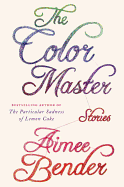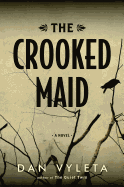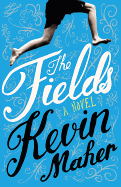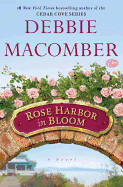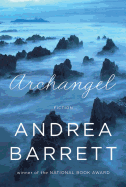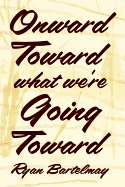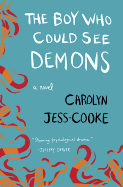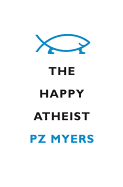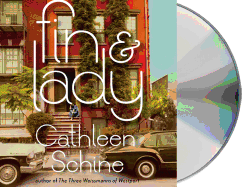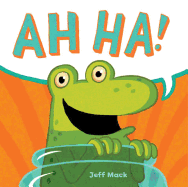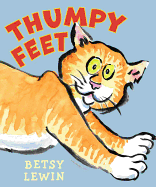 |
| photo: John Ricard |
Mitchell Jackson was born in Portland, Ore., the setting of his debut novel, The Residue Years (our review is below). It is largely based on his experience as a youth and young adult, and tells the story of a tight-knit family plagued by poverty and addiction. Though their options are extremely limited, the novel's characters never give up on one another. Jackson's first book, Oversoul (2012), is a collection of short stories and essays that focus on similar subject matter and shed insightful light on lower-class urban life. Jackson lives in Brooklyn, N.Y., and teaches writing at the college level.
When did you start writing The Residue Years?
I started writing it in 1997 while I was in prison, but put it down when I got out in 1998. After finishing my undergrad, I picked it back up in 2000 when I started graduate school at Portland State University. It was my first thesis, and also my thesis in 2004 when I finished at New York University.
After writing this novel, you returned to the penitentiary where you served time to give a reading. What was the response?
When I drove up to the building, I saw this sign, and I remembered that the last time I'd seen that sign was when they were taking me there. We walked through the grounds, and the reaction initially was hostile. People just stopped and stared--it was like venom. Then I got in the rec room, and all the inmates started clapping. Over the course of 50 feet, I went from people who hated me to people who wanted to show me love.
I read the prologue of The Residue Years, and then we talked. One of the guys said to me, "What you wrote is exactly how I feel." I also made an appeal to them. I told them that though they didn't see writing as an option, they should... that it might be one way to obtain what so many of them want most: respect. Men in prison are all about respect. So when I think about who I want my audience to be, it includes inmates.
Your novel cites controversial issues such as the Len Bias law, which mandates sentences for crack cocaine possession at 1/100 the amount of powder cocaine. Do you ever intend to write more explicitly political work?
I'm not so interested in politics on a national level as I am on a community level. I like to ask, "What does the politics do to the people?" I think if you can humanize politics then that sends a stronger message. Talking about the federal drug laws being unfair is one thing. Talking about your homeboy getting 15 years for a fistful of crack is politics on a whole other level.
The neighborhood in your novel is tough, but there are bright points. What were the best parts of growing up in your community?
One of the best aspects of growing up was going to basketball camps in the summer. We had this nonprofit program that hosted a camp that would give away free shoes and coveted awards: Mr. Offense, Mr. Defense, Mr. Classroom, etc. Another great thing about Portland back then was the summer tournaments in the parks. Everyone would show up at those tournaments. You could hear guys' names called over the loudspeakers, hear the growing "ooh-ing" and "ah-ing" over a dunk or a long three-pointer. There would be music playing and grub to be had. It was a good time as long as nobody acted a fool.
Your characters have overt flaws and subtle virtues. What are their most redeeming qualities?
To me, the most redeeming quality of Champ is his fidelity to the idea of family cohesion and patriarchal responsibility. He wants to be the one who holds his family together. He's hell-bent on being the person who saves the day. His mother Rhonda's most redeeming quality is her hope. She has fallen, but she continues to think that each time will be the last time. She's also hopeful that she'll be the mother she wants to be.
 The Residue Years forgoes all quotation marks and traditional conventions of dialogue. What was the reasoning behind this?
The Residue Years forgoes all quotation marks and traditional conventions of dialogue. What was the reasoning behind this?
Initially it was because I like the style in Junot Diaz's Drown and also in John Edgar Wideman's short story "Weight." But as I moved through the process, there were other reasons. I realized how it makes it hard to tell whether the characters are thinking or speaking or dreaming. I wanted it to be a little dreamy. When the main character steps out of the narrative and starts talking, it adds another layer.
Few writers deal with your subject matter. Do you feel there's a need to tell these characters' stories?
I've always felt an obligation to tell this story, which is why I stuck with it. I remember reading about James Baldwin. He said of his autobiographical novel Go Tell It on the Mountain, "It was a story I had to tell if I was going to tell any others." That's how I felt about this. Also I like Barry Hannah's advice: "Be a master such as you have." I came to realize early on that this experience is what I have and there was value in it. My experience doesn't produce writers. If they're writing, they want to be rappers.
Was there a particular moment where you felt truly called to be a writer?
I took a class from Gordon Lish, who has edited such writers as Raymond Carver and Barry Hannah. It was a sort of boot camp where you listened to him lecture for seven hours straight and then went home and wrote one sentence. If he liked your sentence, you got to write a second one. On the first day, I was the only person in the class who got to use my first sentence. This was years after both of my graduate degrees, but it was the first moment where I felt that I could truly be a writer.
What writing advice might you give to young men dealing with struggles similar to those you experienced?
The first thing I would say is to keep a journal. I would advise them to keep it handy all the time. Then I would tell them that if they were serious about being a writer, they should read deeply--and not just fiction--and also to learn the craft of writing. Unfortunately, in communities like the one I grew up in, there is not a dearth of stories like mine. To fight back against the critics saying, "Here's another of those stories," you have to learn the craft.
What will you work on next?
My next project is to take Oversoul and expand it into a collection of memoirs and fiction. --Annie Atherton
Mitchell Jackson: Called to Be a Writer
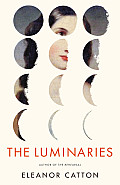 Surpassing both of those in length is The Luminaries by Eleanor Catton (Little, Brown, $27, October 15), at a hefty 848 pages. In 1866, Walter Moody, newly arrived in New Zealand, is drawn into a mystery involving unsolved crimes. More crimes appear in The Woman Who Lost Her Soul by Bob Shacochis (Atlantic Monthly Press, $28, September 3)--just 640 pages. His first novel in 10 years spans five decades, and ranges from World War II Dubrovnik to 1990s Haiti.
Surpassing both of those in length is The Luminaries by Eleanor Catton (Little, Brown, $27, October 15), at a hefty 848 pages. In 1866, Walter Moody, newly arrived in New Zealand, is drawn into a mystery involving unsolved crimes. More crimes appear in The Woman Who Lost Her Soul by Bob Shacochis (Atlantic Monthly Press, $28, September 3)--just 640 pages. His first novel in 10 years spans five decades, and ranges from World War II Dubrovnik to 1990s Haiti.



 The Residue Years forgoes all quotation marks and traditional conventions of dialogue. What was the reasoning behind this?
The Residue Years forgoes all quotation marks and traditional conventions of dialogue. What was the reasoning behind this?